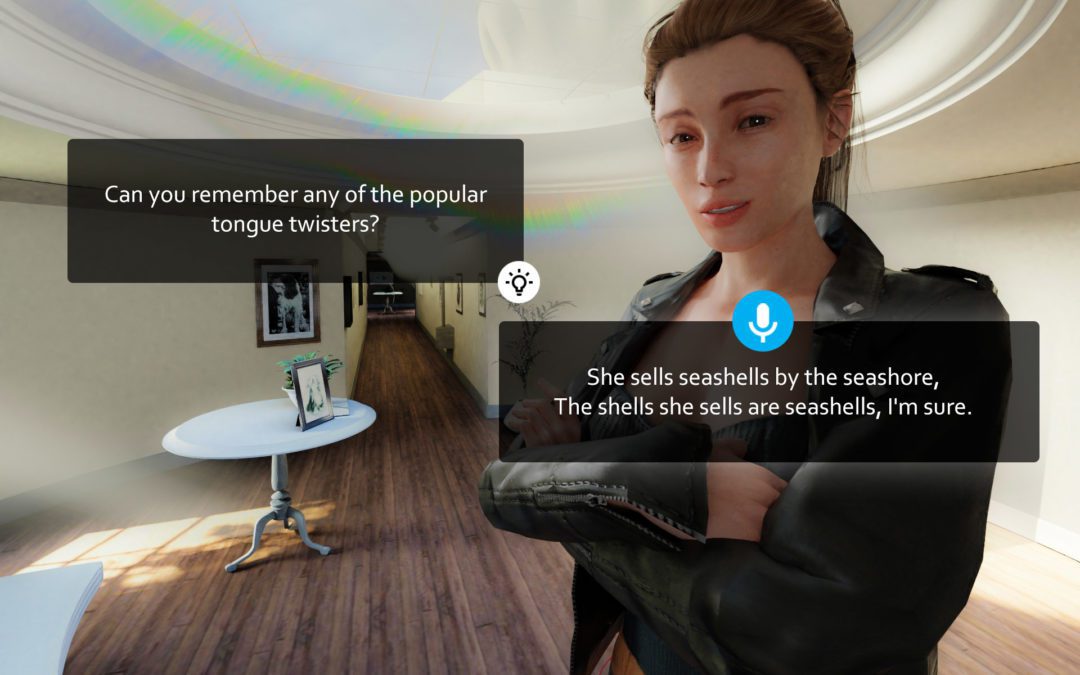This epic scene from “Friends” is probably known to everyone. Teachers, educators, linguists have been working for years so that students don’t look like Joey. And since language learning is very popular, many suggestions for enhancing the process have come forward. When technology comes in possibilities seem endless. Just like the use of virtual reality, which is taking the edu market by storm.
“In 2016, 94 % of pupils in upper secondary education in the EU learnt English. Almost three fifths of pupils in the EU learnt two or more foreign languages in upper secondary education in 2016.”
– EurostatAt the same time, British Council estimates that almost 1.5bn people are learning English worldwide. Learning a foreign language is not always easy. It requires concentration, time, and regularity. Hence, many learners are looking for a magic method and tools that will speed up and facilitate the process, while many entrepreneurs in the 1.5bn market see the potential to provide such tools.
As a kid raised in the 90’s in Eastern Europe, long without my own computer and even longer without a smartphone, I had several methods to learn. Starting from arduous attempts to cram vocabulary noted down in two columns of a checkered notebook, through watching cartoons in the original, ending with (to the despair of my mum) placing sticky notes in every possible place around the flat. Putting books under the pillow for the night was a very popular method then. Knowledge alone (after the fight with feathers, pillowcase, skin and skull) was to magically settle in the brain. The only thing that settled was the strained neck. I looked hopefully at the SITA method (promoted later) which was supposed to relax and teach using magic glasses. Dad didn’t invest.
Since we have smartphones, the learning process seems to be easier. There are plenty of applications that are supposed to motivate, entertain and teach us in different ways. With better and worse results, because does learning the language by translating sentences like “stupid spy wearing pajamas” or “this cow doesn’t eat children” make sense? I do not know. Undoubtedly, the most important in language learning is speaking practice. Who has never said the magic “I understand more than I can say”, he … learned well. It seems that we finally have a tool that may help master this skill.
VR, or virtual reality, in connection with the speech recognition system gives us the opportunity to practice any language anywhere in the world. Literally, because after putting on the goggles, we are able to buy a croissant in Nice, ask for directions in New York, rent an apartment in Berlin or order dinner in Buenos Aires. The possibilities are almost limitless. Being in the center of the action, we actively participate in the events and practice language in everyday situations. This undoubtedly gives more than watching movies with simulated scenes. It is different to watch someone parachuting and doing it yourself. After watching how many videos would you be able to do it? Exactly.
The potential for developing VR language applications is huge. We can recreate real places and situations, e.g. through interactive 360 recordings or 3D models and landscapes. The speech recognition system can give us feedback on the correctness of our speech, and further connections with AI creates a total “Matrix” of possibilities.
Many linguists emphasize that being in a country where this language is used on a daily basis, (complete immersion), gives much better results than instructional learning. When taking language courses, we have classes 2-3 hours a week, exposure to it is low and is rarely used outside the classroom. However, not everyone has the opportunity to go to another country for a few months or years, so immersion in VR seems to make sense.
“Most language-learning apps such as memory games focus on the bottom level in Bloom’s taxonomy, but real mastery of language requires engagement with higher levels: apply, evaluate, and create. That’s what’s you need to really engage with people in a conversation in another language.“
Professor Jonathan Gratch from University of Southern California, who investigates how immersive technologies help with teaching, says that in VR we are in a safe space where we experiment with our new language skills. We can also overcome our fears and anxiety, which that new experience inevitably brings.
In Virtual Reality we can practice conversation in a safe environment without stress. There are a lot of people who, even during holidays or social gatherings (and even lessons!) are ashamed to talk to a native speaker. They are afraid of evaluation and ridicule, and not sure of their skills. Studies conducted among foreign language teachers have shown that there is a unanimous opinion that such technology is not only attractive but can also help to motivate students and potentiate the student’s learning curve regarding the listening of a foreign language. There is bad news, however. No app will learn for you.

